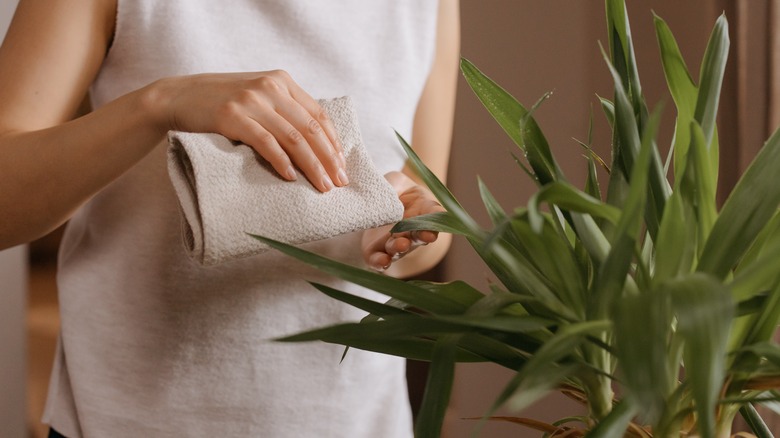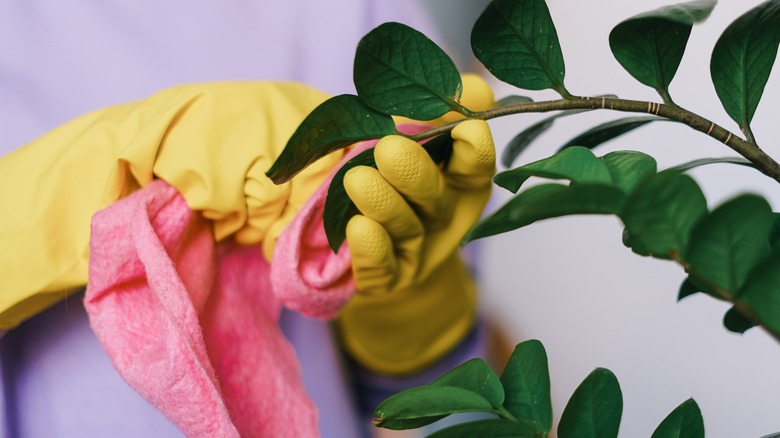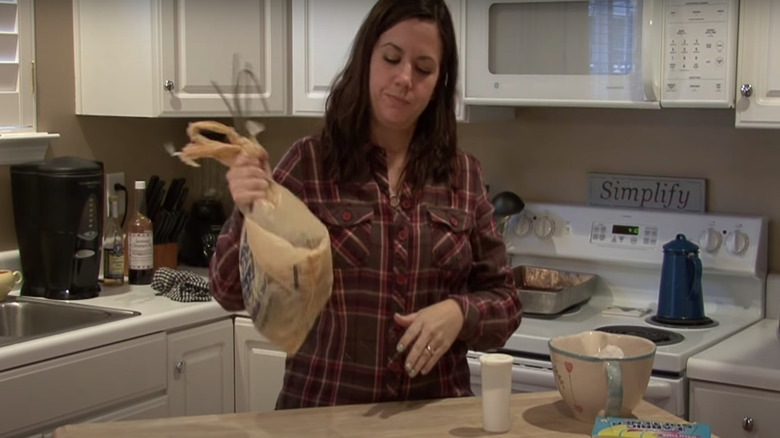The Secret To Cleaning Up Your Fake Plants Is Already Inside Your Home
Artificial houseplants don't require the same level of care as natural plants, but keeping them clean is essential to ensure they retain their vibrant appearance and continue to enhance your living space. Although there are many cleaning products on the market, using WD-40 is a secret method that can transform the way you clean and polish your faux plants. Over time, fake plants can accumulate dust, dirt, and grime, diminishing their visual appeal and making them appear dull and lifeless. They can also collect allergens, which can adversely affect indoor air quality and our overall well-being. Because WD-40 is a solvent, it is capable of dissolving and removing various types of dirt, grime, and residue that accumulate on the leaves of artificial plants over time.
And since it is also a lubricant, it leaves a thin protective layer on the leaves after cleaning. This layer acts as a barrier, making it more difficult for dust and dirt to adhere to the surface. Regular cleaning routines for your artificial plants are vital to maintaining a fresh and hygienic environment within your home. Adding WD-40 to your cleaning routine can help revitalize your fake foliage and keep it looking renewed and beautiful for a long time.
Cleaning artificial plants with WD-40
To clean your artificial plant, gently spray a small amount of WD-40 onto a soft cloth or paper towel, making sure not to oversaturate the cloth. Using a gentle material is vital to avoid damage to the delicate leaves. Begin at the base of the plant and gently wipe each leaf towards the tip. Apply light pressure and cover the entire surface of each leaf, including any crevices or hard-to-reach areas where dirt may have accumulated.
As you wipe the leaves with the WD-40-coated cloth, you'll see the built-up dirt and grime effortlessly lifting away, restoring the natural shine of your artificial plant. After thoroughly wiping all the leaves, use a clean, dry cloth to remove any excess product. Pay extra attention to any areas where the product may have accumulated. The goal is to leave a thin and even layer on the leaves, which will act as a protective barrier against future dust accumulation. Periodically clean your artificial plants using this method to keep them looking fresh and attractive.
Alternative cleaning methods
Other household items can also be used to clean and maintain the beauty of your fake foliage. For instance, you can create a solution by combining equal parts water and vinegar. Then, spray the leaves or flowers of your plant with the mixture, let it stand for a few minutes, and wipe dry. Alternatively, salt is handy for silk flowers and plants that may be difficult to clean with other methods. Place your plant in a bag and add a few tablespoons of salt. Shake the bag well, and gently brush off any remaining salt. Remove the plant from the bag and shake it to remove excess salt. The salt is a natural abrasive, loosening and removing dirt and dust.
Try soaking your artificial houseplants in warm soapy water for a deeper clean. Fill a basin or sink with warm water and a small amount of mild dish soap. Submerge the plant in the water and gently swish it around to loosen any dirt, rubbing any especially grimy spots. Allow the plant to soak for a few minutes before removing it and rinsing it thoroughly with clean water. Then, let it air dry.


